Later in the early part of 1912 Colorado continued westward for duty on the Asiatic Station. On the11th of April 1912 Colorado and California were anchored at a target practice rendezvous point near Olongapo, P.I. and held night firing practice. The next day was clear and pleasant and Colorado got underway in company with USS California at 7:52 for Olongapo. Both ships anchored in Olongapo Harbor about noon on the 12th.
Between August and November 1912, Colorado patrolled Mexican waters and on September 5th 1912 landed a battalion of 323 seamen and Marines at Corinto, Nicaragua, raising the strength of Colonel Pendelton’s forces to 2,000 troops. Col. Pendelton then deployed his troops to take control of the railway from Corinto through Managua and to Granada, which was the artery of the revolution there. During this time the Colorado was positioned off the coast of Guaymas, Mexico, protecting Americans working with the Southern Pacific Railroad of Mexico. Life for these resident Americans and their families was fairly routine while protected by the presence of the American Navy and there was the occasional baseball games between the crew of the Colorado and a local Mexican team. There were even invitations to social events such as a ball given by the Constitutionalist faction to celebrate the ousting of Victoriano Huerta, and programs for shipboard entertainments. She patrolled the area until placed in reduce commission at Puget Sound Navy Yard on the17th of May 1913.
Once more in full commission from the 9th of February to the 26th of September 1915 she continued on active duty as flagship of the Pacific Reserve Fleet. A new dispute between the United States and Mexico in June of 1915 threatened to disrupt the temporary calm in the relations between the two countries. It was the threat of marauding Indians to the lives and property of Americans living in the Mexican state of Sonora that brought more tensions to the relations between Mexico and the United States. Mexico had not taken any effective measures to prevent the Indians from attacking U. S. citizens and as a result the American Government responded by dispatching the USS Colorado to the West Coast of Mexico. On board the cruiser was the 2nd Battalion of the 4th Marine Regiment, less the 27th Company, which remained in San Diego. The Colorado arrived off Guaymas, Mexico on the 20th of June 1915. As was the case in 1914 the Marines most of who were on the South Dakota and West Virginia the previous year, did not land. After a month in Mexican waters the Colorado returned to San Diego, arriving there on the 30th of July 1915. The 2nd battalion, however, did not disembark the Colorado until the 10th of August.
Just before the United States joined the war in April 1917, many of America's older ships were placed in full commission and crewed by the naval militia, among these was the USS Pueblo.
She was renamed Pueblo the 9th of November 1916 while in overhaul, after which she returned to Mexican waters, to blockade interned German ships. She returned to full commission upon the entry of the United States into World War I.
With the Battles of Coronel and the Falklands in mind, upon outbreak of the war, the Navy Department ordered the Pueblo to become the flagship of the Cruiser Scouting Force patrolling the South Atlantic. She joined Pittsburgh (ACR-4), and Frederick (ACR-8) at Colon, Panama, on 29 May 1917 and then proceeded to the South Atlantic for patrol duty operating from Brazilian ports protecting shipping, paying diplomatic calls to South American ports, and preventing the sailing of German and Austrian ships interned at Bahia, Brazil.
At Montevideo, Uruguay in May-October 1917. The ship on the right is either the San Diego or South Dakota . On the left is the USS Pueblo.

On the 14th of May 1917 the Destroyer USS Stewart (DD13) was patrolling the harbor entrance outside the mole at Colon when she heard of news that the Pueblo has been in a fight with a German surface raider. Pueblo had seven holes in her side and the Number 1 and 3 stacks are shot up. During the fight the Pueblo sank the German raider and took 128 German prisoners and 2 aeroplanes. This took place off Magdalena Bay on the West Coast of Mexico.
From a report from the Stewart the Pueblo on 16 May, was moored to the dock in Balboa along with the USS St. Louis, USS Whipple and the USS Truxtun was in the dry dock. The next day the Pueblo went into the dry dock at Balboa for repairs from her fight with the German Raider. Finished with repairs on the 21st of May Pueblo comes out of the dry dock and the USS Pittsburg went in. On the 10th of June 1917 she crossed the equator near the Northeast Coast of Brazil in the South Atlantic Ocean.
Photograph taken on board the ship circa 1919 showing her forward eight-inch gun turrets , bridge, and “cage” foremast.
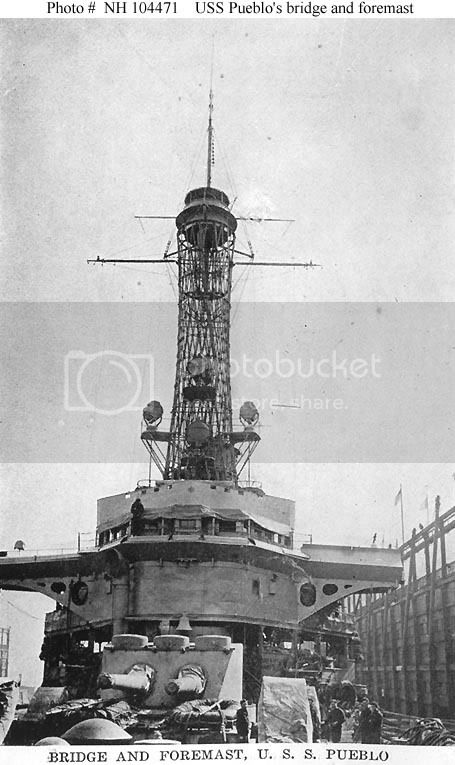
Pueblo returned to Norfolk on the 18th of January 1918, and, between the 5th of February and the 16th of October, made seven voyages to escort convoys carrying men and supplies to England.
During this time she was under the command of Captain Frank B. Upham, who earned the Navy Cross for his command of the Pueblo during the "difficult, exacting, and hazardous" convoy escort missions across the Atlantic.
A photograph of Captain Frank Brooks Upham at right on the bridge of his ship with a US Army Colonel and a man in civilian dress 1919. Note the structure of Pueblo’s cage foremast in the background.
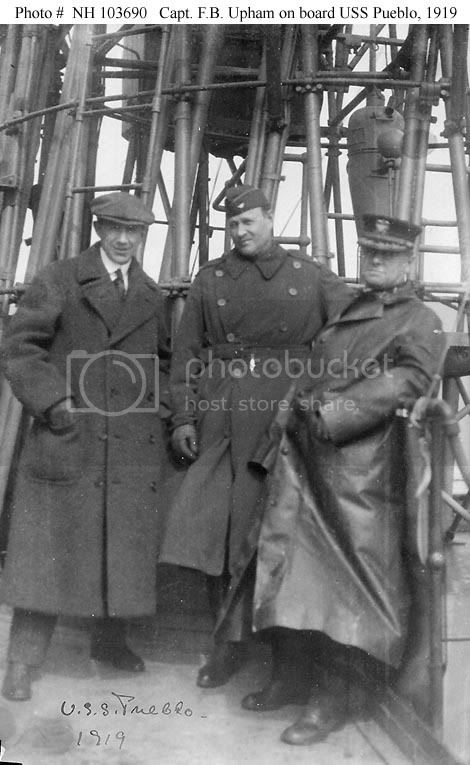
Captain Frank Brooks Upham Commanding Officer USS Pueblo on the bridge of his ship in 1919

Upham later rose to the rank of Rear Admiral.After carrying the Brazilian ambassador to the United States to Rio de Janeiro, she returned to transatlantic duty, making six voyages between Hoboken and Brest, France, to bring veterans of the American Expeditionary Force home.
USS Pueblo arriving at New York from France with several thousand American veterans on board 22 February 1919.

She arrived at Philadelphia the 8th of August 1919 and was placed in reduced commission until decommissioned on the 22nd of September 1919.
Here is a superb collection of shots of the USS Colorado which I just had to share.
Photograph taken circa 1919 in the ships machine shop.
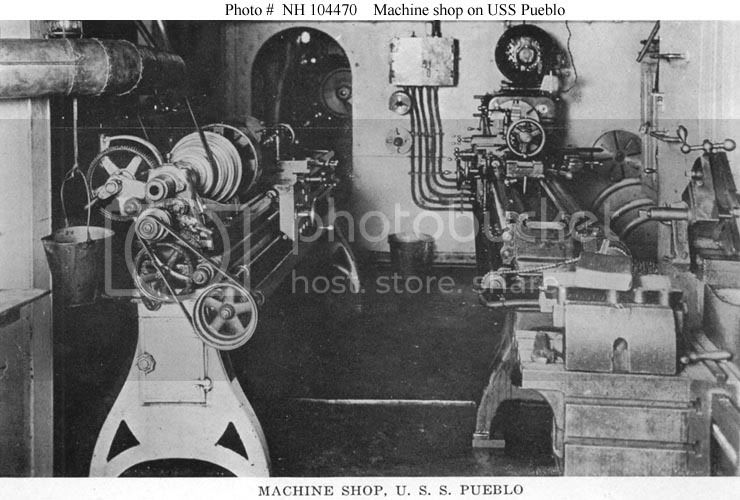
Photograph taken circa 1919 in the ship’s dynamo room.
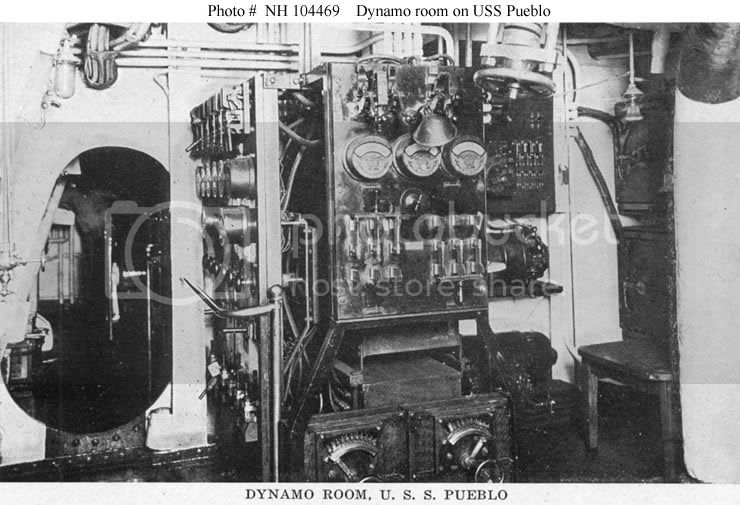
Photograph taken circa 1919 in the crews galley.
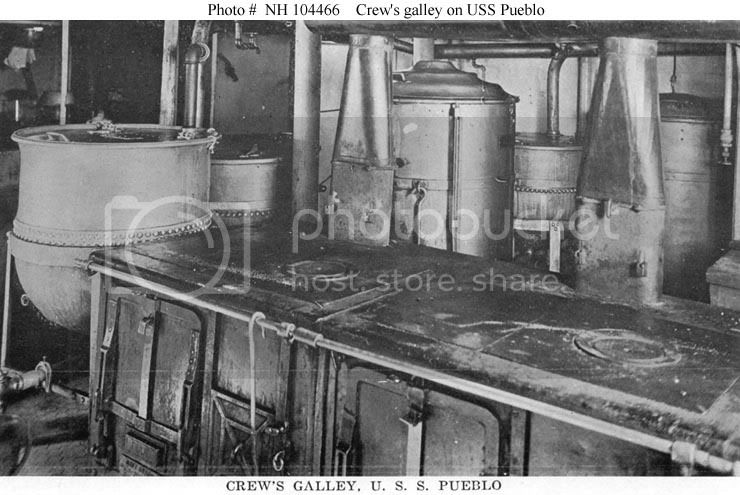
Photograph taken circa 1919 in the ship’s ward room.
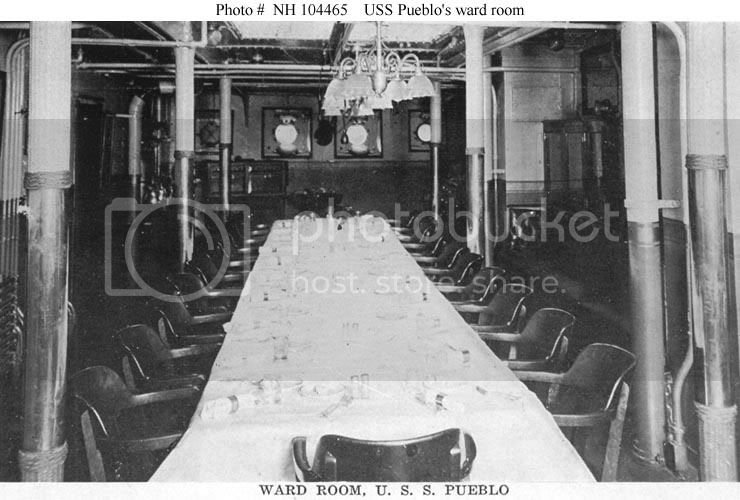
Photograph taken circa 1919 of the interior of the ship’s pilot house.
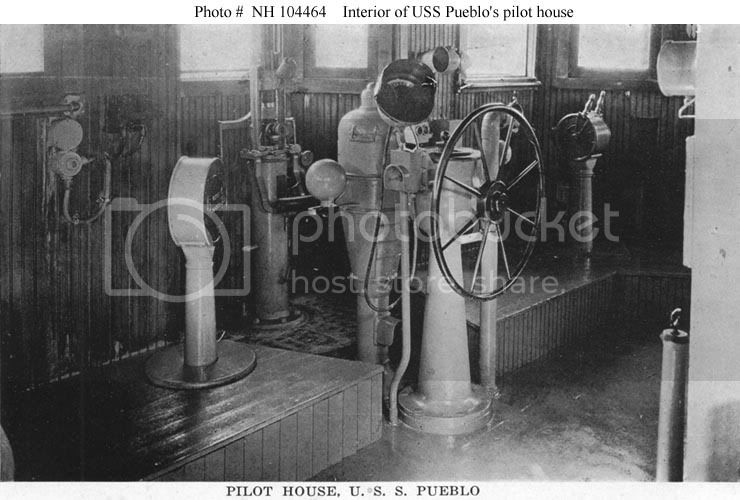
In commission for the last time between the 2nd of April 1921 and the 28th of September 1927, Pueblo served as receiving ship in the 3d Naval District. She was scrapped on the 2nd of October 1930
Cheers
Sean









